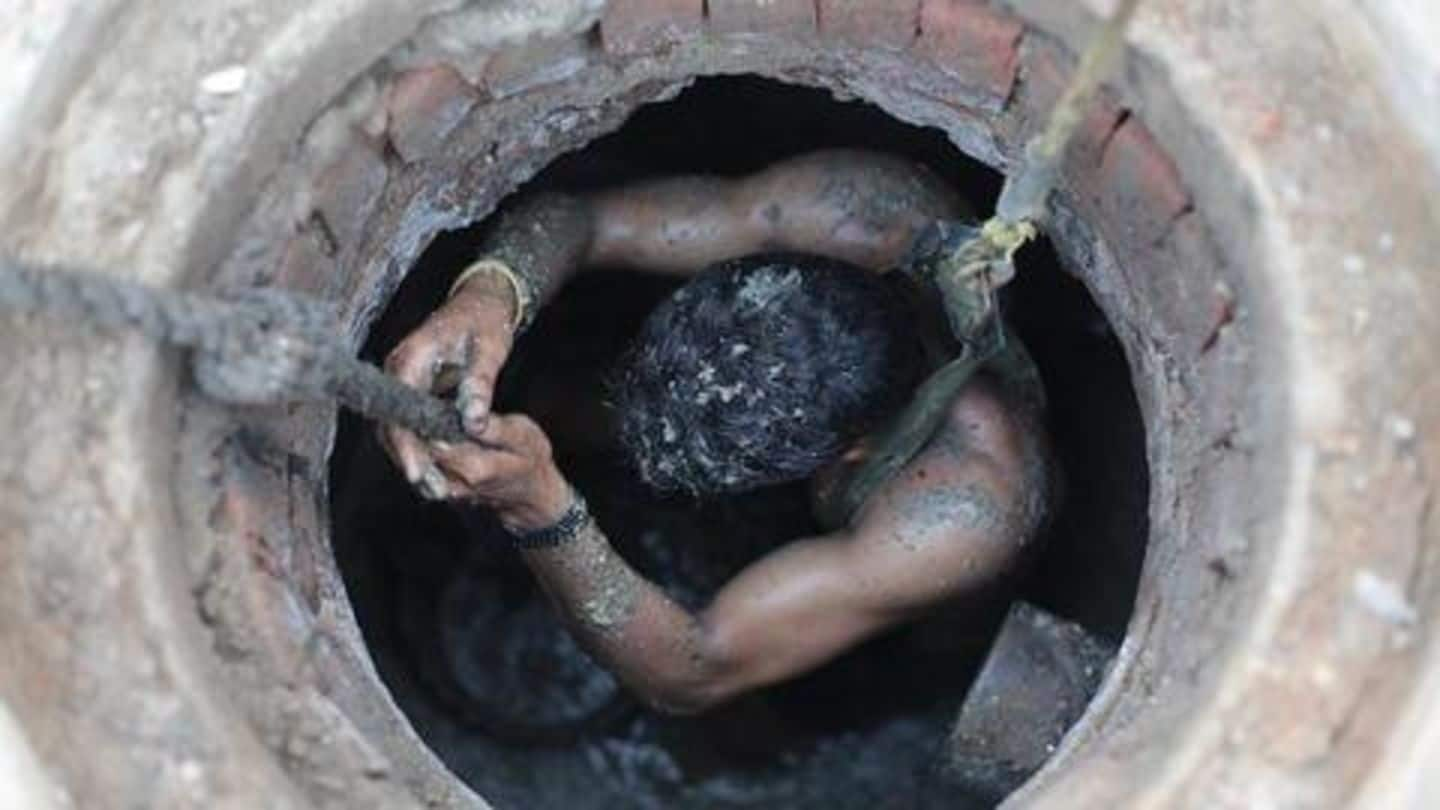
IIT Madras students develop sewer-cleaning robot to end manual scavenging
What's the story
The problem of manual scavenging, which requires unskilled labor to walk down toxic manholes, has been plaguing India for decades.
Hundreds of thousands of workers undertake the dehumanizing job, exposing themselves to harmful gases produced from the cleaning of fluids/excrement.
But now, a group of IITians has developed a robot that could replace humans in manholes and save numerous lives.
Here's how it works.
Robot
Robotic Sepoy septic tank cleaner
Considering the number of deaths and health issues stemming from manual scavenging, IIT Madras Professor Dr. Prabhu Rajagopal and his students developed a pressure-powered robot to clean sewers.
The machine, dubbed Sepoy septic tank cleaner, weighs around 50kg and uses a combination of 360-degree rotation technology and high-velocity cutters to sweep all the filth, even thick layers of waste, collecting down the manhole.
Safety
Remote operation ensures human safety
The best thing about this robot is its ability to do all the dirty work without human involvement.
Basically, a man sitting far from the manhole can use the robot remotely to do the cleaning job, India Today reported.
It also comes equipped with a series of cameras, which helps the person controlling the machine see exactly what is going on in the sewer.
Quote
Here's what Dr. Rajagopal said about the machine
"It is a question of the life of the human beings entering into the tanks which contain hazardous gases. Our current Robot and future additions are aimed at achieving an integrated solution such that no human entry will be required to clean septic tanks."
Cost
Also, maintenance cost of the machine is pretty low
The handy sewer cleaner can do the job at an annual maintenance cost of Rs. 5-10 lakh.
It is currently being tested in heavy-duty field trials and is likely to go mainstream over the next two years.
Dr. Rajagopal and his team are already in touch with different municipal corporations and commercial partners to take the project forward and to the masses.
Hope
This could be the end of manual scavenging woes
If the team does manage to evolve the robot, the problem of manual scavenging could finally come to an end in India.
The practice was outlawed all the way back in 1993, but even today, laborers are forced to clean manholes, which affects their health, even causes death at times.
The tech has done its job, over to you, Mr. Prime Minister!